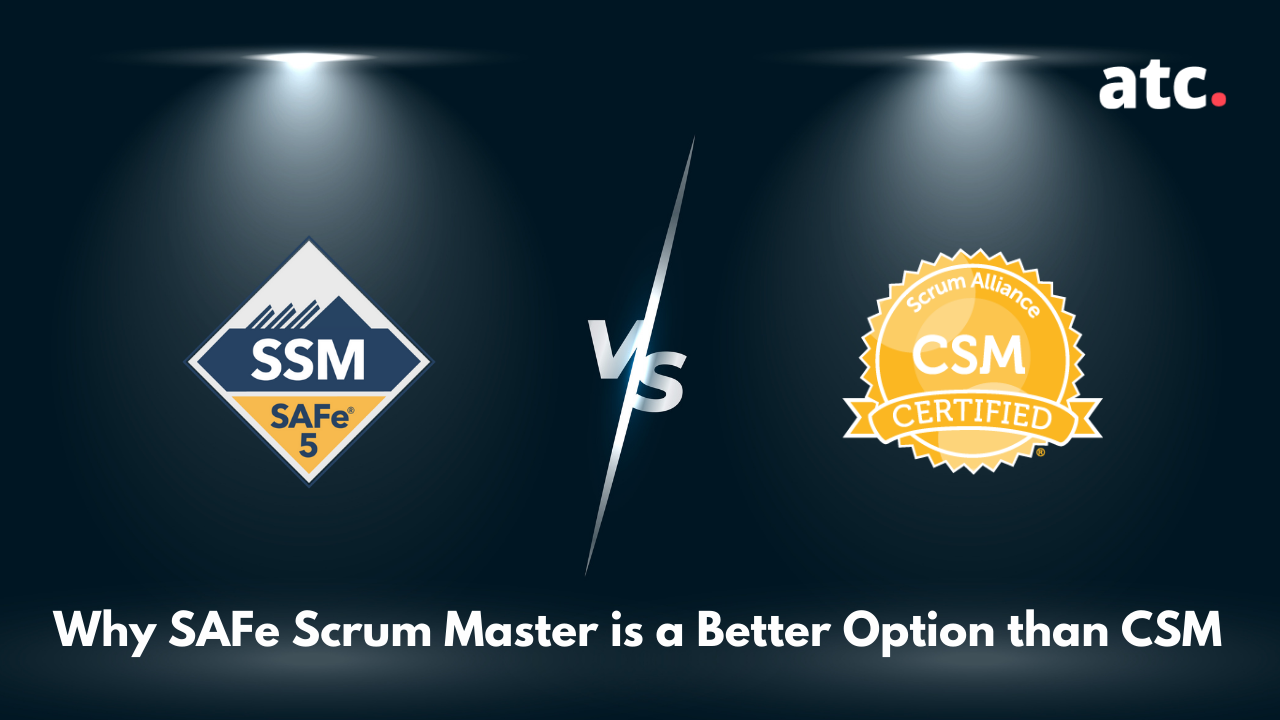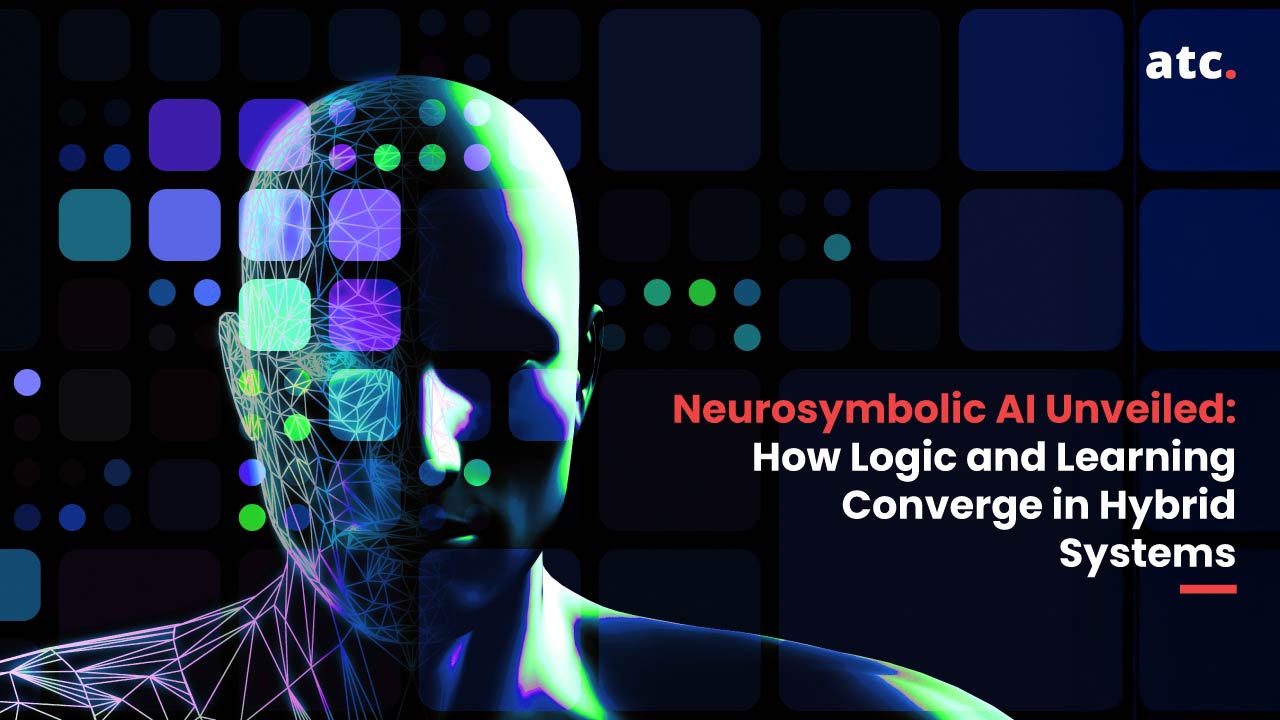Subscribe to the blog
When it comes to certifications in the Agile space, only two stand out as clear favorites: the SAFe Agilist certification (Leading SAFe), and the Certified Scrum Master (CSM). While these two certifications are often compared and contrasted as the only two worthwhile ways to receive a Scrum certification, there is one clear winner.
Here, we will endeavor to explain and show why the SAFe Scrum Master certification is the clear winner over CSM.
But first, let’s be sure we know what a Scrum master is, and why you would want to be certified as one.
What is a Scrum Master?
A Scrum Master is an integral part of an Agile development team. They are responsible for managing communications between members of the team in order to keep projects on schedule and on track. Scrum is a team management technology designed for the optimal development of new software. It is rooted in both self-organization principles and leadership best practices to have superior adaptive capabilities. That’s why it’s called "Agile."
A qualified Scrum Master is someone who is rich in leadership skills. He or she should have a basic understanding of the motivations of software developers, those who own the final product, as well as a clear vision of those who will end up being the end-users of the software technology being created. A successful Scrum Master will have at least a basic understanding of human and workplace psychology as well as the corporate culture of the client organization.
For reference, the Agile development principles are:
- Continuous delivery of valuable software
- Welcoming changing requirements, even in late dev. stages
- Frequent software delivery
- Constant collaboration between business people and developers
- Building projects around motivated people
- Face-to-face information sharing
- Using working software as a measure of progress
- The promotion of sustainable development
- Continuous focus on technical excellence
- Using simplicity to maximize productivity
- Using the current best architecture, designs, and requirements
- Regularly reflecting on progress & boosting the effectiveness
The term "Scrum" comes from the game of rugby. It refers to the point at the start of the game and during breaks in play when opposing teams huddle together in order to regroup, reboot their strategy, and boost morale.
At the start of each day, in Agile development, teams huddle together with the Scrum Master. The Scrum Master then asks the team three questions:
"What did you do yesterday?"
"What will you do today?"
"Is there anything in the way of what you intend to do today?"
While the Scrum Master leads the Scrums, they are not the project leader and they are not singularly responsible for the final outcome of the project. However, don’t think the job of the Scrum Master is easy. The Scrum Master also helps the team to determine what it is possible to achieve in the current period of time the team is dealing with, otherwise known as a "sprint."
A Sprint is to an Agile development team what a "beat" is to an actor. It is a defined, however brief, period of time during which the team is going to place all of their focus and do their best within the limits of that period of time. It’s a bit like a "take it one day at a time" approach where we simply do our best for the present period, knowing that the most valuable period of time to place our focus on is now. Except a sprint could be the next hour, an afternoon, a week, or any period in which we intend to put out a continuous and singularly focused productive effort.
The Scrum Master is tasked with helping the team reach a consensus on what is to be achieved during the sprint that we have ahead of us. They are expected to keep the team focused on the task at hand and especially on the rules and principles of Scrum and the Agile process, as listed above. The Scrum Master is expected to remove obstacles that are standing in the way of the team’s progress. They are also expected to protect the team from any distractions coming from the outside or from within the workspace.
The process of becoming a certified Scrum Master involves deep dives into the framework of the Scrum system and methodology, as well as the various team rules events and other features of the Agile development methodology.
You might think of a Scrum Master as being similar to a life coach for a development team. The Scrum Master’s job is to make the development process run as smoothly, efficiently, and as productively as possible. Most importantly, they are there to help remove ways of thinking that are an impediment to reaching goals and "install" ways of thinking that promote goal attainment. As such, it is an excellent line of work for someone who loves technology and understands it deeply from the user end, but who also loves working with and helping the people who produce software products to be at their best.
The job of an Agile team and the Scrum Master is to help a software development company to get free from common barriers to productivity, to accept design changes as part of the process, and to ultimately deliver valuable software products to the client early, often, and reliably.
Being a successful Scrum Manager is about much more than mastering the material imparted in the various training programs. It is about helping the teams they work with to be at their best at all times. This is done by helping them to remove barriers to productivity, whatever they may be. Barriers could be psychological in nature and often are. They can be environmental, such as distracting media, interactions with people not involved in the software development process, problems outside of work, and so much more.
A Scrum Master must always be mindful of the perceived environment of the teams he or she works with. These professionals are like coaches, counselors, motivational speakers, and more. Their expertise must be bolstered by in-depth knowledge and understanding of the software creation process as well as the intended outcome. They need to be able to work flexibly, with the changing perimeters of the process in mind.
So, if becoming a Scrum Master sounds like a great fit for your personality and career goals, you now know enough to move forward and select a Scrum Master certification program that suits you best. To that end, we will now compare the two most popular and applicable Scrum Master certification programs and weigh their merits and demerits to find out which is the better choice for you.
Which Agile Scrum Master Certification is Best for You?
There are a number of different options you can look into when completing your scrum agile training. One of the first things moving the decision process is the fact that the CSM is often required by government agencies. While this is an important factor for would-be Scrum Masters to consider, it is far from the only one. Many Agile process companies understand and accept that SAFe agile training is more complete and more robust. That being the case, experts have noticed over and over for many years that Scrum Masters with their SAFe certification get better results. Nevertheless, there are some important pros and cons to look over before we can come to a final decision.
SAFe Training
The Scaled SAFe Agile Framework has been specially optimized to provide a remedy for scaling issues in agile development, that were challenging to be arranged by Scrum or scaled agile frameworks. SAFe bridges the gaps between teams within a large program. But it also improves communication between various teams and enhances both the predictability and quality of the final product.
There is a clear advantage, in the release of products using sustainable methodologies with a shorter lead time. This scaled framework covered in the scrum master certification program authorizes an organization to bring powerful changes to the work culture by beginning with the leadership of the team. What’s more, it makes it easier to scale a company up and to produce steady, demonstrable growth in the productivity of the team.
Collaboration, synchronization of focus, delivery of multiple teams, and more can all be smoothly achieved by putting the SAFe framework into place, resulting in improved success and productivity of the organization.
Certified Scrum Master (CSM)
Certified Scrum Master (CSM) is one of the most well-known and popular certifications you can obtain with only basic knowledge of Scrum and the Agile process. It provides a simplified or abbreviated version of the process to the student, resulting in an abbreviated mastery of the Scrum discipline. As such, it is useful as a first step in obtaining full mastery of the Scrum leader skill set. It is also useful for completing government requirements we sometimes encounter and upholding regulatory compliance. This certification will help the beginning Scrum student to obtain a careful understanding of the Scrum framework, but it does not, in and of itself, offer a complete education in the process. CSM can also help professionals to understand the true value of Scrum as well as how to implement the Scrum framework themselves.
With the Certified Scrum Master certification, you will also learn about the importance of accountability and how to achieve it, along with an iterative process to attain the completion of sprint goals and a teamwork format. What’s more, professionals who possess their CSM certification will be able to perform the duties and fill the role of a Scrum team leader or Scrum master. Some of the most important responsibilities of Scrum Master Training involve improving communication, self-management of team members to accomplish goals, and helping with self-organizing.
That said, it would be fair to say that the CSM certification provides a robust overview of the Scrum Master discipline and the role of the Scrum Master in the Agile process. As such, it is not the ideal training program for someone who wants to be a professional Scrum Master. It is best for someone who wants to understand what a Scrum Master should be able to do, to provide temporary or supplementary Scrum Master services, and to be able to become conversant as a member of a board of directors or as a higher level Agile process professional.
The Key Differences Between SAFe Training & Certified Scrum Master (CSM)
By now we understand that there are some important differences between these two certification programs. Moreover, the SAFe Agilist training is more complete and is designed for someone who intends to become a Professional Scrum Master, whereas the CSM training is meant to help the student to become more conversant in the Agile process, to meet some basic regulatory requirements, and to make it possible to act as a temporary Scrum Master when the regular Scrum Master is out sick, or can not be present for other personal reasons.
Prerequisites
The SAFe master certification requires the recipient to have at least five years of experience, whereas a CSM certificate holder can be completely new to the discipline with only a basic understanding of software development. This is one of the primary reasons why the SAFe scrum master certificate is designed more for Scrum professionals, whereas the certified scrum master training program is more for beginners and for supplementary purposes.
Certification Body
The SAFe Scrum certification training is provided by the Scaled Agile training body, whereas the CSM program is provided by CSM.
Required Learning
The SAFe training requires mastery of lean thinking and methods. The students will learn to build a SAFe organization, create a complete portfolio, and utilize the Agile Release Train.
CSM certificate recipients must understand Agile principles, roles within the framework, artifacts, values, organizing, planning, and execution.
Again, we see that the SAFe program is more complete and better oriented toward full mastery of the process.
Attendees Eligible
SAFe:
DevOps practitioners, architects, Scrum Masters, Release Train Engineers, Program Consultants, Product Managers, and product owners
CSM:
Developers, managers, Team Leaders, Business Analysts, and Quality Assurance Managers
Exam Duration
SAFe: 45 minutes of questions within one hour (MCQs)
CSM: 50 minutes of questions within one hour (MCQs)
Difficulty Level
SAFe: Difficult
CSM: Easy
Overview & Conclusion
As we can see, each of the certification programs is distinct with specific purposes and uses. Each training program is designed for professionals with a specific scope of practice, the field of expertise, specialties, and responsibilities.
The CSM training program is ideal for Agile Scrum Master beginners, Agile managers, product owners, and managers, and for anyone with an interest in the Agile process who is not directly involved in the process or whose involvement is to be limited in time or scope for whatever reason. CSM is often a required level of training in order for organizations to meet the demands of regulatory bodies, although this is not always the case in every region, state, or jurisdiction. It is an excellent start for companies looking to expand their managerial prowess and is a great help for any development team interested in putting the Agile process into effect within their production process.
By contrast, the SAFe certification and training are much more in-depth. It is designed to complete the education of those who wish to or must fulfill the role of a Scrum Master. A CSM level of training may be a necessary first step toward becoming a certified Scrum Master. It may be needed for Agile team leaders, project managers, and anyone involved in the managerial process entailed by the Agile methodology. This is not to say that one program is necessarily superior to the other. They have different roles to fill for different reasons.
The CSM training program is both useful and necessary for many reasons, including, of course, needed regulatory compliance. The SAFe training is needed for the completion of a more full and complete level of expertise needed by active, professional Scrum Masters. At the end of the day, the dedicated Scrum Master must complete SAFe training for both regulatory reasons, but more importantly, to possess complete mastery of the tasks of the job.
Because the Agile process is all about being flexible enough to smoothly handle changes to the final product, Scrum Masters must roll with the punches and help the teams they work with to do the same.




